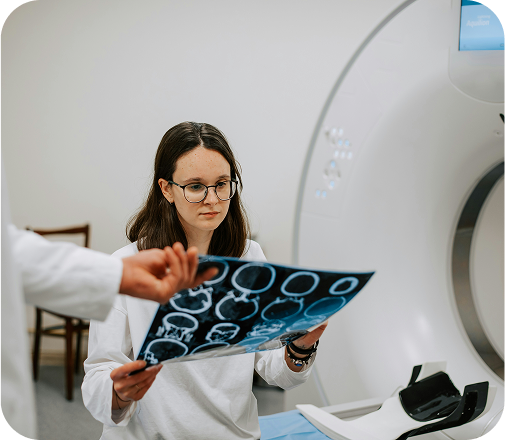
our expertise
Unrivaled Understanding
Expertise in Oncology, Rare Disease & Specialty
We maintain a network of experts who are a class by themselves. From nurses to clinical trial coordinators and medical science liaisons, our ability to tap the best minds, key opinion leaders, and influencers means that our strategies and plans are instilled with the latest thinking from all corners of the global pharma industry.
While Amplity is fluent in therapeutic areas across the entire medical spectrum, we’re especially well-versed in the areas of oncology, rare disease, and specialty medicine.
Oncology doesn’t stop evolving. And neither do we.
We Operate On the Cutting-Edge



Quite simply, no other firm can match Amplity for our knowledge of oncology. Even as the field evolves in real-time, our team maintains constant expertise in the latest developments and treatments. We appreciate the implications of those advances for our clients like no one else. And we apply that understanding to every aspect of our work on behalf of oncology therapies — from marketing and messaging to provider needs and our ultimate mission — the patient experience.
We Translate Our Knowledge To Our Services + Strategies



We are committed to ensuring our expertise in oncology infuses directly into our work. Whether that’s developing plans for payer coverage for new therapies — or the testing needed to get those therapies to the patients who need them most.
Our ability to support field reimbursement and national account managers in this space is unmatched. Our oncology journals and learning solutions alike empower our partners to excel within the complex area that is oncology.
Our ability to support field reimbursement and national account managers in this space is unmatched. Our oncology journals and learning solutions alike empower our partners to excel within the complex area that is oncology.
Rare disease requires a rare partner.

We Have Mastered the Art of Finding Patients with Rare Diseases
Our expertise in precision medicine has given us a firm grasp on the dynamics of diseases that affect less than 200,000 patients. We know that providers in this discipline often confront some of the most difficult diagnostic challenges. For patients, the search for the right treatment can be taxing — to say the least. Which is why our unparalleled mastery of areas including biologics, biosimilars, diagnostic testing and gene therapies is is our core distinction — in the treatment of rare diseases.
Rare disease requires a rare partner.

Patient Finding for Faster Diagnosis — Powered by AI
We’ve made it our mission to educate different HCPs — such as doctors, laboratory professionals, pharmacists — on the details and nuances of rare disease. AnswerY, our proprietary platform + database, is really good at helping find patients with rare disease.
It isn't limited to ICD-10 codes and can easily search for symptoms associated with a rare disease.
Our tech rapidly identifies patients so that they can be diagnosed and treated, quicker and better. Our work often touches other key audiences such as advocates, researchers, policy makers, legislators, and caregivers.
Other Specialties
We Specialize In
Cardiology
 Psychiatry
Psychiatry
 Neurology
Neurology
 Cardiology
Cardiology
 Psychiatry
Psychiatry
 Neurology
Neurology
 Cardiology
Cardiology
 Psychiatry
Psychiatry
 Neurology
Neurology
 Cardiology
Cardiology
 Psychiatry
Psychiatry
 Neurology
Neurology
 Cardiology
Cardiology
 Psychiatry
Psychiatry
 Neurology
Neurology
 Cardiology
Cardiology
 Psychiatry
Psychiatry
 Neurology
Neurology

Cardiology
 Psychiatry
Psychiatry
 Neurology
Neurology
 Cardiology
Cardiology
 Psychiatry
Psychiatry
 Neurology
Neurology
 Cardiology
Cardiology
 Psychiatry
Psychiatry
 Neurology
Neurology
 Cardiology
Cardiology
 Psychiatry
Psychiatry
 Neurology
Neurology
 Cardiology
Cardiology
 Psychiatry
Psychiatry
 Neurology
Neurology

Cardiology
 Psychiatry
Psychiatry
 Neurology
Neurology
 Cardiology
Cardiology
 Psychiatry
Psychiatry
 Neurology
Neurology
 Cardiology
Cardiology
 Psychiatry
Psychiatry
 Neurology
Neurology
 Cardiology
Cardiology
 Psychiatry
Psychiatry
 Neurology
Neurology
 Cardiology
Cardiology
 Psychiatry
Psychiatry
 Neurology
Neurology
 Cardiology
Cardiology
 Psychiatry
Psychiatry
 Neurology
Neurology
